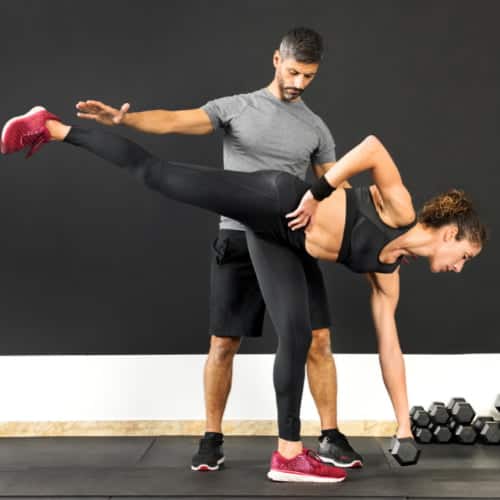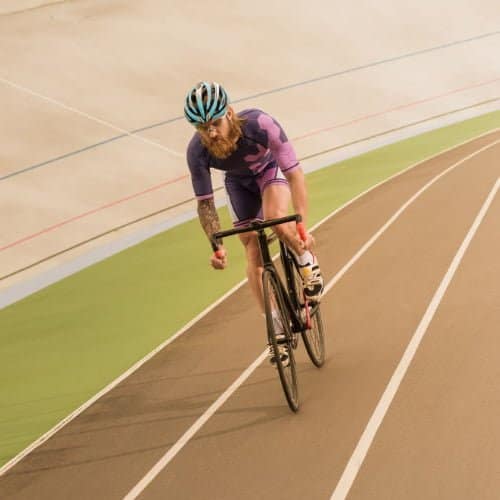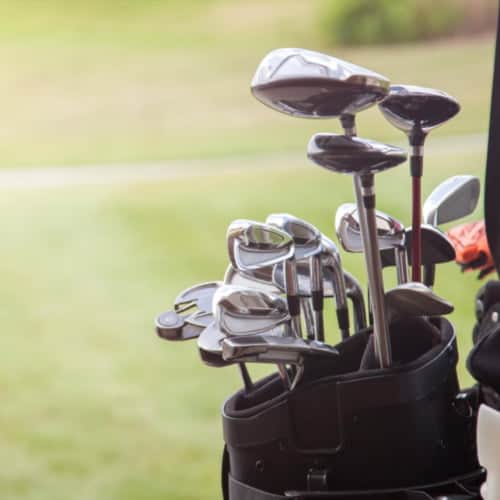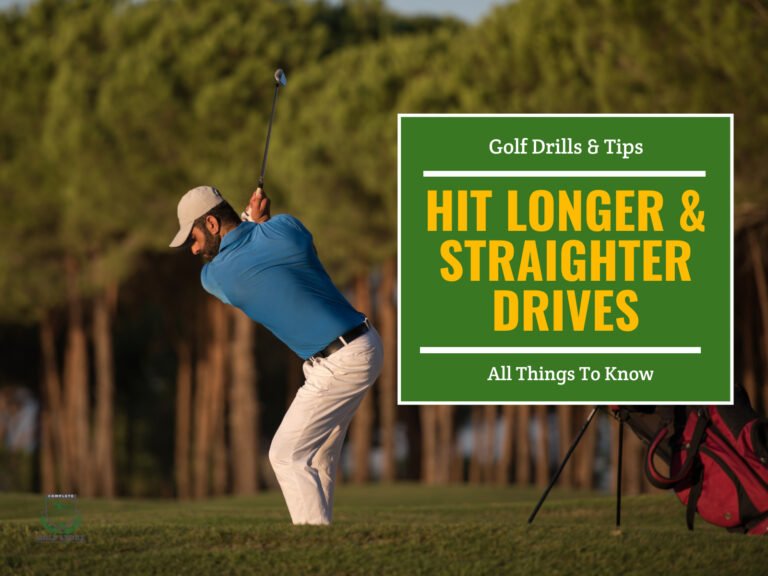Driving the ball powerfully yet accurately is one of golf’s greatest challenges. Nothing matches crushing a long, straight tee shot down the fairway. But for many, the driver causes slices, hooks and miscues leading to penalties and lost balls. Developing a consistent driver is key for lower scores.
This guide provides techniques to help you maximize clubhead speed and ball striking. Proper setup, grip, posture, and alignment establish a solid foundation. Backswing and downswing motions are explored through drills and swing thoughts to shallow the club, build lag and generate power.
Fitness, mobility, and equipment factors are also discussed. By implementing these teachings, you can confidently hit drives in the fairway.
Equipped with this knowledge, you’ll gain control over your tee shots and master driving.
Backswing Drills for Power
Generating clubhead speed and power starts with a compact, coiled backswing. These drills and techniques will help you achieve the necessary shoulder turn, wrist hinge and hip rotation in your takeaway:
Towel Drill
Place a towel under your right armpit and keep it pinned to your side throughout the backswing. This promotes a full 90-degree shoulder turn while preventing lateral sway. This was one of the legendary Ben Hogan’s favorite drills.
The following video (1 min. 16 sec.), from The Golf Chanel, will show you the details of the drill:
Wall Drill
Make practice swings with your back a few inches from a wall. If your shoulders or hips touch, you’re swaying. Focus on turning against the wall.
Watch the wall drill being explained in this video (8 min. 33 sec.)
Wrist Hinge Check
At the top, ensure your right wrist is flat and parallel to the ground. A lack of hinge reduces leverage and hampers club speed.
Watch how to execute the drill perfectly through this ( 9 min. 44 sec.) video:
Hip Bump
Feel a slight bump of your right hip towards the target to start the backswing. This gets your lower body involved in the coil.
This (9 min. 41 sec.) video will explain the hip bump in detail:
Pause at Top
Hold your backswing for 2-3 seconds to feel the loaded power before firing down. This develops strength in the proper positions, as can be seen in the following short video (2 min. 05 sec.) with pro player Xander Schaufelle explaining the pause at top drill:
Over the Fence
Swing to a point where the shaft is parallel to the ground, as if swinging over a fence. Do 10 reps to master this crucial halfway point.
Watch this video (2 min. 53 min.) to see how you can practice this drill to fix your posture:
Headstill
Keep your head steady throughout the backswing. Let your shoulders and hips turn against a stable head for optimal coil. Do this by following the guidelines in the following video (3 min. 56 sec.):
Implementing these backswing drills will help you achieve the depth, width, and power to maximize your driving distance. Groove a compact, synchronized coil and prepare your body to uncoil violently through the ball.
Transition and Downswing Movements
An efficient transition and downswing are imperative for maximizing clubhead speed while maintaining control. To properly sequence your downswing, you can use these techniques:
- Bump the Hips – Initiate the downswing by bumping your hips towards the target. This shifts weight and primes your sequence.
- Shallow the Shaft – As your lower body leads the downswing, allow the arms to drop which shallows the club naturally. Don’t manipulate the wrists.
- Straight Left Arm – Feel like your left arm stays straight and in front of your chest during the initial downswing. This maintains lag.
- Clear the Hips – As you rotate through impact, feel your hips clearing out of the way, allowing room for your arms and club to swing freely.
- Release the Club – Time the release of your wrists and forearms to coincide with the ball contact point and not before.
- Land on Left Side – Your weight should be fully shifted to your left side by contact, with your right foot coming up on your toes.
- Full Finish – Complete your swing with a balanced finish, chest facing the target and belt buckle pointing downrange.
Rehearse these downswing sequences slowly. Ingrain the proper movements then gradually increase speed. Mastering these transition fundamentals is vital for generating maximum clubhead speed and consistent contact.
Here is a video (7 min. 5 sec.) showing how to have the perfect downswing:
Swing Thoughts for Consistency
Ingraining the proper swing feel and mental cues can help reinforce optimal motor patterns for consistent driving. You need to focus on key swing thoughts such as the following:
Soft Hands
Consciously relax your grip pressure throughout the swing. Feel like your hands are passive and the club is swinging freely like a pendulum. This eliminates tension and enhances clubhead speed.
Turn Hard
Aggressively rotate your upper body against resistance from your stable lower body. Maximize the separation between upper and lower halves for a powerful coil.
Shallow the Shaft
During the downswing, resist the urge to manipulate the wrists or flip the club. Allow your body rotation to naturally shallow the shaft for maximum lag and leverage.
Sweep the Ball
Visualize your clubhead brushing up the back of the ball at impact to launch it into the air. Maintain the angle of attack and avoid digging at the ball.
Eyes on Ball
Fix your gaze directly on the back of the ball and hold it there several inches after impact. This improves contact and prevents decelerating.
Hold the Finish
After impact, stay balanced with your weight shifted forward and chest rotated open. Hold this finish position for 2-3 seconds.
Smooth Rhythm
Move smoothly between the backswing and the downswing. Avoid rushing your transition or getting too quick before impact. Find your optimal tempo.
By rehearsing these swing feels and cues, you can reinforce the motor learning pathways for clean, powerful drives. They will counteract your natural swing flaws and ingrain the correct movements.
Fitness and Flexibility Exercises
Physical capabilities directly impact driving performance. Developing strength, flexibility and power allows for greater clubhead speed and consistency. Target these areas:
Shoulder Mobility
Full range of motion in the rotator cuff enables a wide, unrestricted backswing and follow-through. Perform sleeper stretches holding for 30 seconds. Do external rotations with a resistance band.
Thoracic Spine Rotation
Rotation through the upper back is vital for a powerful coil. Foam roll the mid back before swinging. Do thoracic rotations using a towel held vertically behind your back.

Hip Flexibility
Open, mobile hips allow for proper weight shift and clearance on the downswing. Stretch hip flexors, abductors and external rotators for 30 seconds on each side.

Core Power
A strong, stable core anchors the swing and prevents energy leaks. Do front and side planks, Pallof presses with resistance bands, and overhead medicine ball slams.

Glute Strength
Strong glutes support a forceful coil back and powerful unwind through impact. Perform glute bridges, fire hydrants and clamshells with resistance bands.

Balance/Coordination
Enhanced balance unlocks a smooth, athletic motion. Practice single-leg Romanian deadlifts and stability ball exercises to improve kinesthetic awareness.

Cardiovascular Endurance
Being aerobically fit increases stamina allowing for more quality range time. Examples of great exercises to improve stamina include cycling, rope jumping, running, brisk walking, and swimming.

Dedicate yourself to golf-specific training for tangible improvements in club head speed, ball striking and shot shaping.
Choosing the Right Equipment
Optimizing your driver and ball specifications to match your swing characteristics can provide significant gains. That’s why you should bear a few factors in mind:
Loft
The loft of a golf club refers to the angle of the clubface (relative to the ground) that determines the trajectory and distance of the golf ball when it is struck.
Slower swing speeds below 90 mph need higher lofts of 10-12 degrees to launch the ball on a higher trajectory with less spin for maximum distance.
Faster swingers above 100 mph can use lower lofts of 8-9 degrees for a more penetrating ball flight with a longer distance.
Shaft Flex

Golf club shaft flex refers to the flexibility or stiffness of the shaft in a golf club. It impacts the way the clubhead behaves during a swing and influences the ball’s flight.
Stiff and extra-stiff shafts are better suited for faster swings above 95 mph, since the shaft won’t lag or whip.
Slower swings below 90 mph need more flex like regular or senior to load the shaft properly.
Length
Shorter driver lengths around 44 inches provide exceptional control, while lengths over 45 inches generate faster clubhead speeds as discussed in this shaft length guide here.
Experiment with different club lengths to find your optimal balance of swing speed and accuracy.
Lie Angle
This is the angle between the shaft and the ground when the club is placed in the address position. It affects the clubhead’s orientation at impact, influencing the direction the ball will travel.
Standing more upright benefits from upright lies that help correct slices. Flat lies work better for flatter swings to prevent hooks and pulls.
A professional fitting session is your best bet while choosing your clubs to ensure they suit your swing style.
Weight

Heavy drivers above 300g offer greater stability, while lighter drivers around 290g boost swing speed.
Consider adding lead tape to customize your driver’s weight.
Draw/Fade Bias
Drivers with more heel weight make it easier to square the face, fighting slices. Toe weighting promotes an open face for players struggling with hooks.
Many drivers from reputable brands include features such as movable weights and hosels that allow you to tweak the characteristics and avoid bad shots.
Ball Construction and Compression
Golf ball construction refers to how a golf ball is made and the materials used. Modern golf balls typically have a multi-layer construction, consisting of a core, one or more mantle layers, and a cover.
Softer golf balls compress more on impact, providing greater distance for slower swing speeds. On the other hand, balls with a higher compression rating are firmer and better suited for faster swings above 105mph.
To learn more about golf balls, we invite you to read our article dedicated to the types of golf balls.
Practice Drills for Improvement
Quality repetitions using purposeful drills ingrain proper techniques. The following are some tested and approved drills you can use to improve your game:
Alignment Rehearsals
Take practice swings focused only on perfecting your alignment, ball position, posture, grip, and aim. Repeat this as much as needed and whenever possible to fully groove your setup.
You may start by following the guidelines in this 5 min. 47 sec. video to achieve the perfect alignment:
Backswing-Only
Make smooth, controlled backswings stopping at the top. Hold for 2 seconds. Exaggerate the width and full 90-degree shoulder turn for kinesthetic feedback.
Let’s go back to the Golf Chanel with this short video (3 min. 22 sec.) focusing on backswing-only practice:
Downswing-Only
Stand in address position, then make aggressive, accelerated downswings starting from the top and freezing after impact. Feel the proper sequencing.
You may also want to check out this 8 min. 43 sec. video showcasing downswing practice using an alignment stick and the same wall drill we discussed earlier:
Half-Swings / 3/4 Swings / Full Swings
This method is intended to help you learn the proper swing mechanics before trying full swings. You may start with a shorter iron before moving to drivers. The idea is to learn proper driving gradually.
Hit easy 30-50-yard half-shots focusing on making centered contact with a shallow, sweeping approach. Try to Control trajectory and tight dispersion.
As you advance, rehearse 3/4 length swings turning fully through the ball with optimal tempo. Increase to full swings as you master the proper sequencing.
Use Training Aids
Use weighted clubs, impact bags and speed trainers to isolate and refine specific techniques in a controlled, measurable way.
We suggest going through our detailed guide on golf swing training aids available on the market and choosing the ones that suit your needs.
Self-Monitoring
Use video recording cameras, sensors and launch monitors to check positions, monitor progress, and make data-based adjustments.
You can start by checking our selection of the best golf launch monitors and choose one that fits your needs and budget. This can help take guessing out of your practice sessions.
Final Thoughts
Mastering the art of the drive requires a comprehensive approach focused on technique, training and technology. This guide provided key fundamentals to add distance and eliminate dispersion from the tee box.
To further enhance your driving technique, it’s crucial to focus on developing proper swing mechanics. Golf swing lag drills can significantly improve your golf swing lag, helping you generate more power and distance off the tee
By optimizing setup, backswing motions, transition sequencing, swing thoughts and practice protocols, you can achieve efficient mechanics to produce speed with control. Dedicated physical training builds the athleticism needed to unleash the body for maximum power. Customized equipment specifications also provide an optimized launch.
The satisfaction that comes from consistently splitting fairways with 300-yard drives makes the hard work worthwhile. Distance and accuracy provide a strong foundation for lower scores. Equipped with the techniques in this guide, you can bring confidence and control to your driving game.
If you have any questions or comments, please contact us by leaving a comment below or sending an email.
Thanks for reading!





